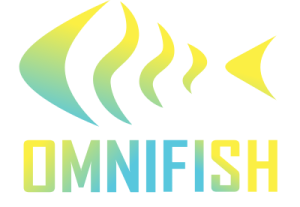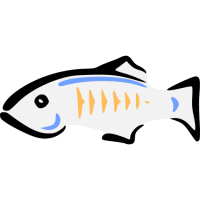Organizations running applications on Payara have enjoyed continuity since the end of Oracle’s commercial GlassFish offering. But in today’s demanding production environments, continuity alone is not enough. Enterprises need stability, production readiness, and continuous innovation to ensure long-term success and competitiveness.
Payara’s monthly releases have primarily focused on incremental fixes and small adjustments, with minimal updates to the platform’s core subsystems. While this strategy delivers short-term stability, it also leaves deeper architectural challenges unresolved and slows the pace of innovation.

Eclipse GlassFish, largely developed and commercially supported by OmniFish, takes a completely different approach. With a commitment to modernization and enterprise-grade quality, Eclipse GlassFish delivers monthly releases packed with meaningful improvements: performance optimizations, security hardening, architectural enhancements, and ongoing alignment with modern deployment practices.
Our OmniFish engineering team includes two Java Champions alongside other recognized Jakarta EE experts, ensuring that every release delivers trusted, enterprise-quality improvements. Beyond our internal expertise, we actively collaborate with world-class community contributors, fostering innovation and accelerating the delivery of new capabilities.
Focus on Enterprise Success
Every Eclipse GlassFish release is designed to advance three strategic objectives:
- Stability – resolve root causes, minimize risk, and enhance reliability.
- Modernization – deliver new features, adopt the latest Java versions, and integrate with the tools enterprises rely on today.
- Production Readiness – ensure predictable, thoroughly tested behavior in mission-critical environments.
With these goals in mind, Eclipse GlassFish has evolved into a production-ready, modern, and reliable application server that delivers the performance, flexibility, and the new features enterprises require. With strong support for cloud-native, on-premises, and IoT deployments, GlassFish combines proven Jakarta EE standards with continuous innovation, making it a powerful choice for organizations seeking a future-ready platform.
Comparison of GlassFish and Payara
| Eclipse GlassFish 7.0.25 | Payara Community 6.2025.6 | Payara Enterprise 6.27 | |
|---|---|---|---|
| Pros | Eclipse GlassFish 7.0.25 Lightweight yet robust and powerful, no vendor lock-in, fast modernization, strong focus on Jakarta EE, MicroProfile, and security.⭐ Focus on stability and security in any deployment ⭐ Active, monthly releases ⭐ Open-source; Community project ⭐ No vendor lock-in ⭐ Commercially supported ⭐ High-availability clustering ⭐ Early support for new Java versions ⭐ Much faster startup ⭐ Fast asynchronous logging ⭐ Windows SSH nodes support ⭐ Microservice runtime | Payara Community 6.2025.6 Platform for development projects that supports Jakarta EE and MicroProfile applications⭐ Focus on testing and development ⭐ Active, monthly releases ⭐ Open-source; Maintained by Payara ⭐Full MicroProfile 6.1 ⭐Flexible clustering using Hazelcast ⭐Additional monitoring services ⭐Additional health check services ⭐JCache ⭐Microservice runtime | Payara Enterprise 6.27 Robust, flexible clustering, advanced monitoring and health check features, strong focus on Jakarta EE and MicroProfile.⭐ Focus on mission critical or production deployments ⭐ Active, monthly releases Requires commercial subscription ⭐ Full MicroProfile 6.1 ⭐ Flexible clustering using Hazelcast ⭐ Additional monitoring services ⭐ Additional health check services ⭐ JCache ⭐ Microservice runtime |
| Cons | Eclipse GlassFish 7.0.25 Lighter in enterprise features, fewer MicroProfile features.✖ Fewer enterprise features | Payara Community 6.2025.6 Not recommended for production. Configuration and commercial support not straightforward, locked to a vendor, modernization slower.✖ Dependent on Payara, who owns and controls the project ✖ Testbed for Payara Enterprise, stability and security not a priority ✖ Support from Payara requires migration ✖ Complicated configuration of monitoring features ✖ Slower to support new Java versions | Payara Enterprise 6.27 Commercial subscription required, often at a very high cost.Source code not publicly available. ✖ Requires paying license fees ✖ Terminating subscription implies a migration ✖ Slower to provide new features ✖ Slower to support new Java versions ✖ Higher resource usage because of additional features |
Fast Innovation
Eclipse GlassFish leads with a fast rate of innovation, adopting new Jakarta EE specifications early, modernizing core components, and ensuring smooth operation in containerized and cloud-native deployments.

OmniFish also prioritizes rapid security response: new GlassFish components are upgraded immediately, and vulnerabilities are addressed as soon as they are discovered. Customers benefit from frequent, reliable updates and complete confidence in the platform’s resilience. The community also benefits from all these updates contributed to the Eclipse GlassFish project by OmniFish. This provides immediate value to OmniFish customers and prevents vendor lock-in at the same time, as all critical updates end up in the open-source project. Payara tends to address all customer needs in Payara Enterprise first, with no guarantees they will end up in the open-source Payara Community distribution.
While Payara continues to support Jakarta EE, its smaller monthly updates result in fewer structural changes, lack of performance improvements, and slower response to industry trends. In contrast, Eclipse GlassFish prioritizes Jakarta EE compliance as a core strategic objective. This commitment fortifies enterprise-grade reliability, ensures long-term adaptability, and safeguards your investments for the future. As the primary driving force behind GlassFish, OmniFish guarantees the stability and enterprise focus of Eclipse GlassFish. This positions it as a robust and dependable Jakarta EE runtime, ideal for all production deployments – far more than just a platform for experimenting with new Jakarta EE features.
Enterprise Features Without Lock-In
Migrating to Eclipse GlassFish gives organizations a standards-based, enterprise-ready application server that avoids vendor lock-in. Out of the box, it includes the asadmin CLI, REST management API, and JMX support, with seamless integration into CI/CD, Kubernetes, and GitOps workflows.
While Payara still offers a broader set of features, GlassFish is closing the gap rapidly, providing equivalents for many widely used features. Eclipse GlassFish already supports three MicroProfile APIs (Config, REST Client, JWT) and will soon add MicroProfile Health in version 7.1—bringing support for four of the five most widely adopted MicroProfile features. Development is already underway on additional APIs, with MicroProfile Telemetry next in line.
On the other hand, GlassFish contains significant security and performance enhancements that Payara doesn’t match. GlassFish allows auditing all configuration commands with its Command Logger, while Payara’s Asadmin Recorder records only commands performed via the admin UI. GlassFish provides a completely redesigned asynchronous high-performance logging system, minimizing logging overhead. And, perhaps most notably, GlassFish starts twice as fast as Payara Server; and Embedded GlassFish (executable from the command line) starts twice as fast as Payara Micro, just under 3 seconds.
Clustering, Docker, and Deployment Flexibility
GlassFish offers enhanced clustering capabilities, including full SSH-based management of remote instances and reliable session replication. Unlike Payara, GlassFish natively supports SSH even on Windows servers—ideal for smaller on-premises setups and IoT integrations.
For cloud-native workloads, GlassFish provides an official, fully supported Docker image that runs both the administration server and Embedded GlassFish. Creating custom Docker images is effortless: GlassFish can run in a single main process using the startserv script, eliminating the need for complicated Docker scripting. With Embedded GlassFish it’s even easier – an executable JAR can be launched from command line and configured with a single configuration file. MicroProfile Config makes it a breeze to externalize configuration so that Docker containers can be easily configured when they are launched or via Kubernetes.
Backed by OmniFish Expertise

Most of the new innovations in Eclipse GlassFish come directly from OmniFish. Our team is continuously expanding functionality while delivering world-class commercial support—including immediate security fixes, performance enhancements, troubleshooting, and expert consulting.
With Eclipse GlassFish and OmniFish, organizations don’t just get a powerful application server. They gain a future-ready enterprise platform backed by experts, ensuring productivity, reliability, and confidence in every stage of development and deployment.
Some Numbers to Prove It
We like talking about why and how Eclipse GlassFish is an exceptional enterprise platform — and how OmniFish contributes to that. But we believe showing proof and presenting real results is even more compelling. That’s why we’ll present some numbers here to compare the pace of innovation between GlassFish and Payara. These numbers are taken from public information about Eclipse GlassFish project and the Payara Community project. There’s not enough public information available about Payara Enterprise releases, therefore we don’t include it in the comparison.
The following table summarizes the activity in public releases during a 1 year period:
| Eclipse GlassFish 7 | Payara Community 6 | |
|---|---|---|
| Included releases | From 7.0.16 to 7.0.25 | From 6.2024.7 to 6.2025.6 |
| New Features and Improvements | 29 | 20 |
| Fixes | 79 | 51 |
| All resolved issues and maintenance tasks | 243 | 218 |
Sources:
This high-level comparison shows that Eclipse GlassFish has moved faster within 12 months, added more improvements, fixes and resolved more tasks overall. Payara Community seems pretty active too. However, the devil is in the detail. Looking into individual issues, you’d see that changes in GlassFish are much more profound and groundbreaking than in Payara. While features and fixes added to Payara Community were rather cosmetic, GlassFish saw significant new features, profound optimizations, and sometimes a complete redesign of legacy solutions. We encourage you to look into more details and compare the changes into the release notes. To get a taste of what’s new in GlassFish, you can also have a look at these articles:
- Recent Updates in Eclipse GlassFish Releases
- GlassFish is rolling forward. What’s New?
- Interview with GlassFish project lead about the upcoming GlassFish 7.1.0 version
What’s coming next for GlassFish?
After a steady pace of evolution, with regular monthly releases of GlassFish 7.0.x in the past few years, substantial advancements are coming in GlassFish 7.1 soon, closely followed by the final release of GlassFish 8.0 later. Both of these versions will bring key improvements and new features in production-ready releases, hardened by a huge suite of automated tests.
GlassFish 7.1 will add MicroProfile Health support to complement other MicroProfile APIs, and will add support of all MicroProfile APIs in Embedded GlassFish to align it with GlassFish Server. GlassFish 7.1 will also improve security by using more modern PKCS12 certificates, and improve performance with a lot of little performance improvements and structural simplifications.
GlassFish 8.0, which already has a milestone version that provides all the Jakarta EE 11 functionality, will be the first server that introduces production-ready Jakarta EE 11 support. Besides that, GlassFish 8.0 will add other new features like native support for NoSQL databases via NoSQL entities and Data repositories, to streamline development of cloud-native microservices with alternative data stores.
GlassFish is simply here, and it’s here to stay — better than ever, backed by OmniFish and a vast community of contributors and users.


